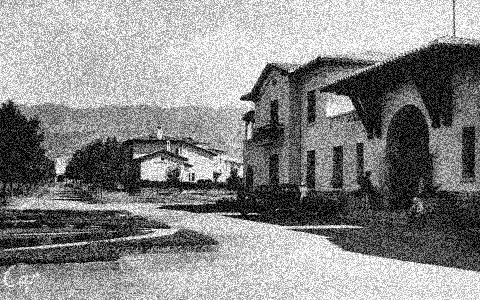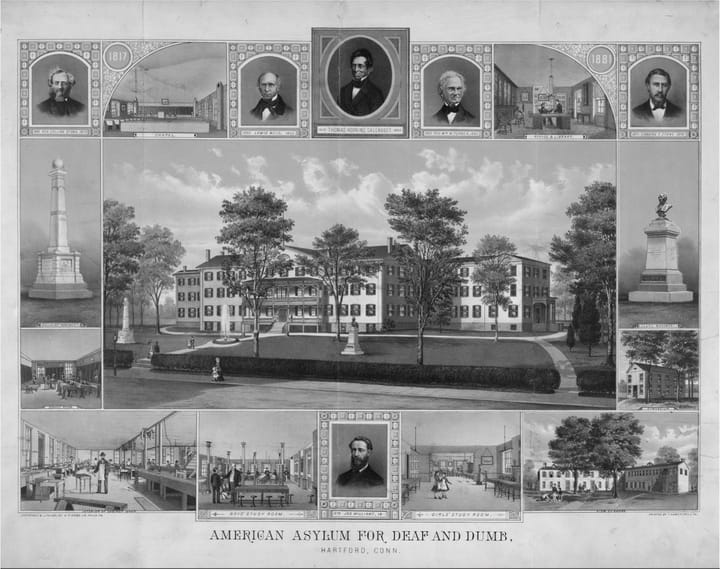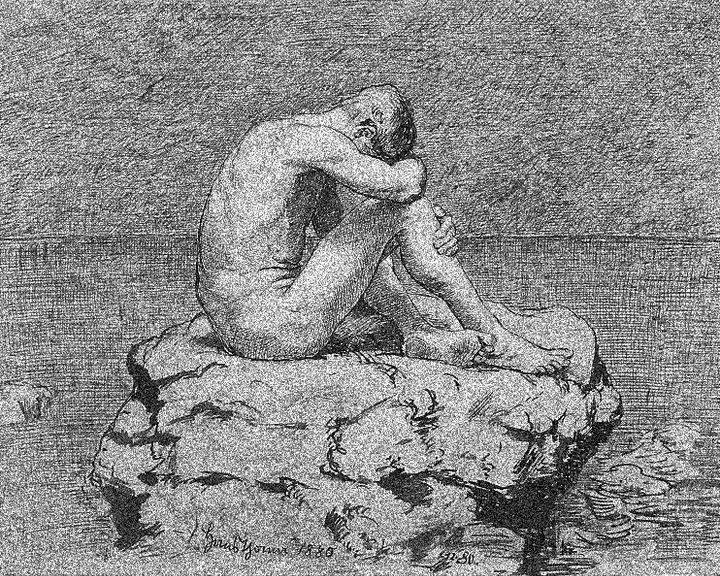The Phenomenon of Agitation in the Psychiatric Milieu
In the hallucinatory process, we see the collapse of the world turn into a system of reference.

In 1957, Frantz Fanon co-authored a paper with his colleague at the Blida-Joinville Psychiatric Hospital in Algeria, Slimane Asselah, called “The Phenomenon of Agitation in the Psychiatric Milieu.” Responding to another paper by François Tosquelles that established a set of rules for psychiatrists to follow in diagnosing and treating psychomotor agitation, Fanon and Asselah spurn the rigid medicalization of agitation, arguing for the iatrogenic effects of typical asylum practices. Set in its own context, this mostly technical paper is a remarkable testament to Fanon’s active humanitarian presence in the politics of mental health.
What stands out to Damage is not the specific humanity of Fanon and Asselah’s claims but rather their generalizability. The world is collapsing around us. Rather than join in true anti-capitalist struggle, many have fled to the hallucinatory hills of online paranoiac subculture or neo-fascist fantasy. The authors respond to the kind of hallucination authorized by isolation by recognizing the real difficulty of creating a therapeutic environment: introducing elements of the external world only reinforces the essential problem, but isolating separate and distinguished environments feed delusions of reference. If we think of Fanon and Asselah’s claim here as generalizable, then we face the question of how to create political working environments that are neither isolated nor too directly mirror the deficient reality that has defaulted in the first place.
This piece is an abridged translation of Frantz Fanon and Slimane Asselah, «Le phénomène de l’agitation en milieu psychiatrique», Maroc Médical, 36: 380 (Janvier 1957): 21-24. The parts that have been cut mostly pertain to ancillary, specialist psychiatric debates.
A hospital patient’s behavior must be understood as a function of the hospital and the possibilities of assimilation within the hospital setting. If the hospital is a therapeutic environment, if above all else its staff aim to create a space for dis-alienating encounters, if there is a willingness to take charge of the living, agitated organism, then it is possible to genuinely see illness as it is.
To treat the hospital as an instrument of therapy is to aim to have it experienced by the patient as that which offers true understanding rather than as that which amputates and castrates. When patients demonstrate a fractured aggressiveness or what staff often perceive as a “willful intractability,” they are obviously responding to a repressive, concentration camp type of structure and not a truly therapeutic environment.
Outside of eating and sleeping, most non-bedridden patients will typically spend their days wandering the asylum court in a Brownian movement. One needn’t spend much time in an asylum to know that any repressive measures and restraints are taken on the initiative of the staff, on the part of whom doctors often suspect sadistic behavior. If a prohibition on the binding of patients is issued, a chain reaction follows that vitiates the doctor’s orders: “Doctor, this patient has broken everything.” “Doctor, this patient has injured three staff members.” “See doctor, we must tie up this patient for our own safety.” In reality it is the hospital itself that is sadistic, repressive, rigid, unsocialized, and castrating.
It would be good to devote a study to hallucinations that are provoked. On account of the reaction of an organism to a state of dissolution, there is a massive regression to a kind of archaic thinking, expressed bodily and through decreased discrimination of sensory data.
Psychoanalysts believe that onirism, pseudo-hallucinations, and the importance of play and mime appear mostly in the oral stage. The flood of words, the whirlwind emergence of an atmospheric festivity, Dasein deployed simultaneously at two poles of temporality, all render orality vertiginous. Existence in the oral state is aggressive and violent, troubled by anxieties related to childhood frustrations.
In the hallucinatory process, we see the collapse of the world turn into a system of reference. Hallucinatory time and space bear no pretension to reality. As Sartre claims, hallucination coincides with a sudden annihilation of perceived reality. It is a perpetual flight; its spatio-temporal frame is unreal, fictitious.
Nonetheless, the hallucinated belief, on which psychiatrists have so focused, is that which legitimates in the eyes of the hallucinator the apparent significance of his troubles. Practically then, isolation, restraint, and the sadistic use of coercive methods provoke, or at least precipitate and deepen, the regression… Confining, isolating, and tying the sick to their beds thus create all the necessary conditions for hallucinatory activity.
Hallucination is thus not the product of cerebral excitation or a specific encephalic nutritional problem. Hallucination is rather a global comportment, a response of the organism. Certainly the hallucinatory response presupposes a dissolution, an organic or metabolic impairment. But the distortions are never univocal. In opposition to the work of Marc Farland and Goldstein on the level of metabolic stability in relation to the level of emotional stability, as well as that of Hoskins on the chronic lack of oxygen caused by perturbations of enzymatic catalysis characteristic of schizophrenia, it is necessary to keep in mind that hallucination escapes all mechanistic explanation. For there to be hallucination, there must be something else: the collapse of the real world.
The rejection of the real world is only possible thanks to the emergence of a pseudo-world based on new relations and new significance. The denial of reality, itself a function of brutal violation, requires substantiation and nourishment, which is provided by the asylum. From this perspective, isolation is the authorization of hallucination.
Asylum staff tend to dismiss the agitated without perceiving the relations of fundamental reciprocity existing between them. Agitation appears in the context of the hospital, and thus demands to be understood not mechanically but dialectically. Even those who refuse such an interpretation admit that agitation decreases in conjunction with proper staff training and the even superficial disalienation of the hospital environment.
If the hospital is understood as a node of social relations comprised of ambiguous encounters, agitation loses its sense of seclusion, irresponsibility, and incomprehensibility. From a dialectical perspective, agitation appears in the primordial cycle of the reflecting-reflective mirror: you give to me, I receive, I assimilate, I transform, I reciprocate.
Certainly, all destructive reactions, of which agitation is only a modality, do not just disappear. But if we restore the signifying value of the organism’s attempts at explanation, the second internment that isolation represents can be dismissed once and for all.
It is important to keep at bay, however, while properly organizing the hospital, the mystification that the hospital is like the outside world. This is how we get obfuscating phrases like “the hospital-village”; “the hospital, a reflection of the outside world”; “at the hospital, it is like on the outside, the sick must feel like they are at home…” These expressions are an attempt to mask reality under humanitarian concerns that are falsely psychotherapeutic. Le Guillant is absolutely right to condemn these attitudes as delusional.
If the hospital is treated like the external world, there is a tendency to legitimate this comparison by instituting systems of control reminiscent of the outside, which leads to deleterious consequences. The presence of police in a hospital, for instance, inadvertently undermines the authority of the ward chief and conveys a sense of threat to the patients.
We cannot aim to merely “calm” the agitated. Telephone conversations or Sédol or Largactil prescriptions show a complete misunderstanding of the pathological mechanisms. Agitation is not only an excrescence, a “psychomotor” cancer. It is also, and more importantly, a modality of existence, a kind of actualization, an expressive style.
Agitation is disarming because it is that which reunites structures. It can appear at any level of dissolution, and in the process provoke catastrophic reactions. Then the “agitated who know what they do” are locked up with the “agitated who know not what they do.” In reality the agitated simultaneously know and do not know what they do. Or if one prefers, they do not know what they do, but they try to find out. These attempts at understanding shed some light here and there, leaving the observer with the disagreeable impression of being mystified.
In these disordered and anarchic behaviors that are labeled nonsense, the fundamental ambiguity of existence is integrally borne.
■
Frantz Fanon was a psychiatrist at Blida-Joinville and the author of Black Skin, White Masks and The Wretched of the Earth.
Slimane Asselah was an intern at Blida-Joinville.
Translated in consultation with Nigel C. Gibson and Roberto Beneduce, Frantz Fanon: Psychiatry and Politics (London: Rowman & Littlefield, 2017), pp. 138-143.



